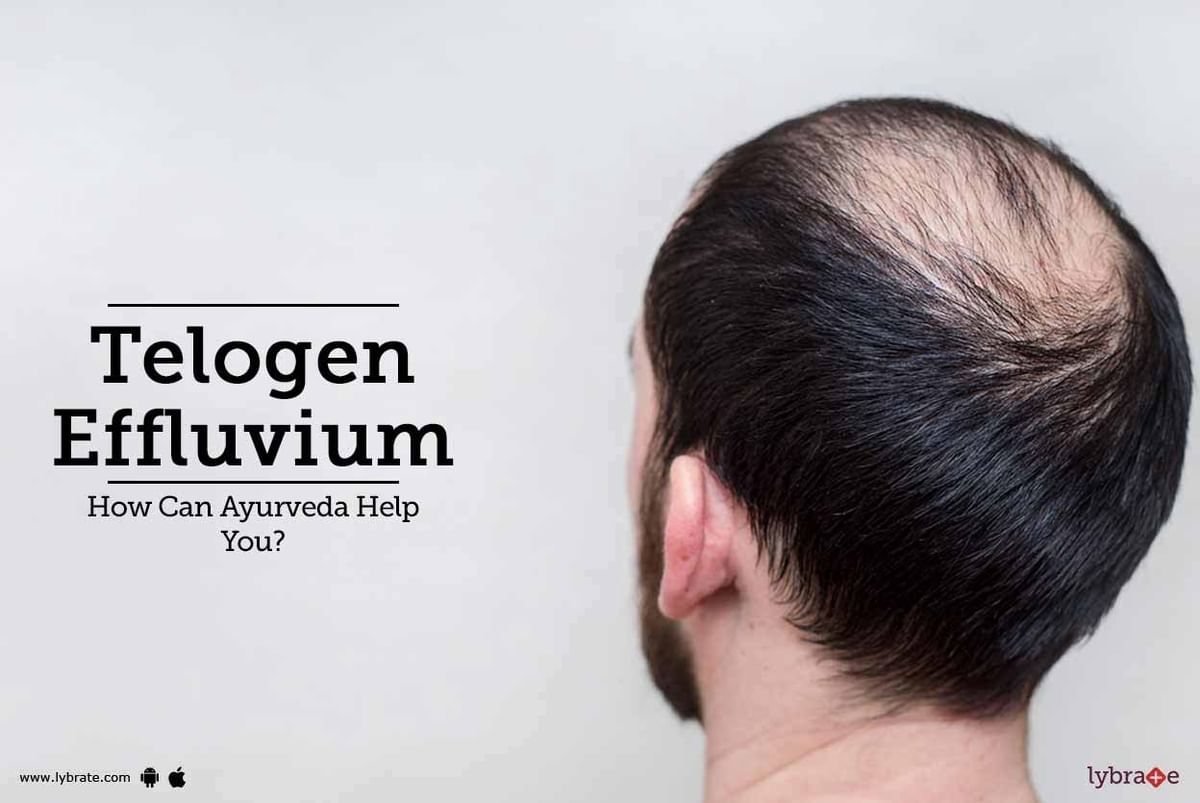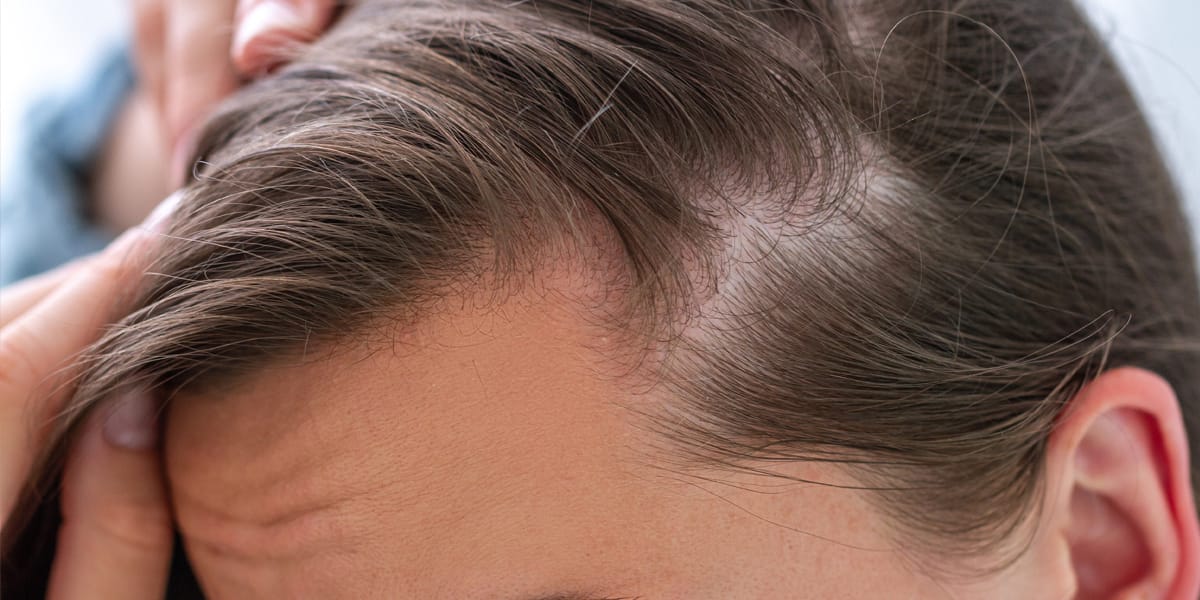Table Of Content

In a normal healthy person's scalp, about 85% are anagen hair and 15% are telogen hair. Anagen hair are actively growing hair while telogen hair are resting hair. A hair follicle usually grows anagen hair for almost four years, then rests for about four months. A new anagen hair begins to grow under the resting telogen hair and pushes it out. If there is some kind of stress to the body it can cause 70% of anagen hair to precipitate into the telogen phase thus causing hair loss.
Diagnosis and Tests
If you suddenly lose a lot of hair, talk to your doctor for help figuring out what caused it. A blood test could also reveal underlying health problems that are contributing to the hair shedding. This article looks at the causes, symptoms, diagnosis, and treatment of telogen effluvium, including dietary changes that may help. Because one of the main causes of telogen effluvium is a stressor on your body, it’s important to identify the cause.
Enhancing Healthcare Team Outcomes
Cycle synchronization may occur also in the course of long-lasting medications with estrogens. The pill may induce collective teloptosis when it is interrupted. Minoxidil and finasteride do the same and may induce collective teloptosis 3–4 months after the medication is stopped. Disease correlation with triggers, and the timing of hair loss should be explained and frustrations addressed. Hair is an important part of the human body; the degree of psychological disability due to hair loss varies from person to person [25]. Your doctor may ask you to collect your hair for 24 hours before your visit.

Diagnosis

Patients should be reassured that their hair is normal and that they can wash and style their hair as usual. The types of stress that cause telogen effluvium may be physical or psychological. Relaxation techniques like meditation, yoga, and appropriate exercise may help you recover from physical trauma and reduce stress levels, which could lead to restored hair growth more quickly. Some surgeries or vaccinations can cause a shock to your system and put the hair follicles into a resting state. In some patients, hair shedding continues to be intermittently or continuously greater than normal for long periods of time, sometimes for years.
“Without medications or treatment, hair loss due to androgenetic alopecia is permanent and progressive,” explains Dr. Bailiff. It involves an abrupt onset of hair shedding, usually several months after experiencing a triggering event. A dermatologist might also be able to diagnose telogen effluvium and offer advice. They will look at other indicators of hair health, such as the appearance of the scalp, any patches of hair loss, or more generalized hair thinning. Telogen effluvium is different from the hair loss disorder alopecia areata.
How does telogen effluvium affect my body?
After a short time, new hairs then grow from the hair follicles as usual. A normal pattern and thickness of hair returns within a few months once these new hairs are established. Telogen effluvium is the most common cause of diffuse non-scarring alopecia.
Toronto might be causing your hair loss - The Toronto Observer
Toronto might be causing your hair loss.
Posted: Thu, 25 Apr 2024 13:57:29 GMT [source]
Prevention and Healthy Hair Practices
Use of this website and any information contained herein is governed by the Healthgrades User Agreement. At the visit, your doctor will ask what medicines you take and whether you were sick or stressed in the 3 months before the hair loss started. It may be hard for the doctor to see effluvium if you haven’t lost much hair. Some people lose all of their hair within a few weeks to months.
Causes of Anagen Effluvium
Telogen effluvium is one of the most common causes of rapid hair loss. It’s also one of the most common causes of hair loss in women and people AFAB. Professional hair stylist Megan gives her advice on the best hairstyles to adopt if you are experiencing thinning hair. “Ingredients like sulphates, parabens, and formaldehyde can irritate the scalp and weaken the hair, making it more prone to falling out.
What medications/treatments are used to treat telogen effluvium?
I also made the difficult decision to go off birth control after over a decade of taking the pill. While this was and is purely speculation, I felt the hair loss kicked into high gear when I switched to Larissia after being on Sprintec for 13 of the 14 years. Knowing hair is heavily influenced by hormones, I wanted to eliminate all possible factors. I’d been considering ditching the pill for a few years anyway, and thinning hair proved to be my tipping point. I eventually went into problem-solving mode and made an appointment with a top-rated dermatologist in my area. Their professional guidance, coupled with independent research, a good haircut, and naturopathic medicine, have helped my hair stage a small but mighty comeback.
Also, frequently she complains about a “pain in the hair” (trichodynia),3,45,46 a symptom that should be asked for because the patients are shy to confess it spontaneously. Customarily, she is a well-being person without signs of anorexia or nutritional insufficiencies, and often, her TE is chronic/intermittent. However, it may be present in a discrete form in areas normally spared by AGA, especially the supra-auricular area (personal observation).
“Traction alopecia is a type of hair loss caused by prolonged pulling or tension on the hair follicles. This often happens when hairstyles like tight ponytails, braids, or extensions are worn regularly. Being gentle with your hair while it’s experiencing change is important so as not to exacerbate any thinning.
A scalp biopsy can confirm the diagnosis, but most people don’t need one. Hair loss from telogen effluvium usually shows up 2 to 3 months after the stressful experience, surgery, medication, or other change to your body that caused it. It appears gradually and is diffuse, or spread over a wide area.

No comments:
Post a Comment